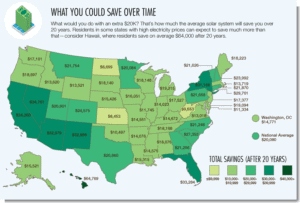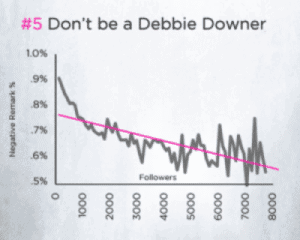LinkedIn’s marketing impact on business cannot be denied. In fact, one source estimates that up to 80% of B2B leads were generated through LinkedIn in 2019. With more than 30 million companies represented and 90 million senior-level users, its audience also has 2x the buying power of the average web audience.
In other words, marketing through LinkedIn should be a critical part of your company’s social media marketing strategy for 2020. That’s why we’ve assembled the following list of Dos and Don’ts to help you make the most of your LinkedIn marketing efforts:
DO Optimize Your Personal Profile
Before you worry about best practices for sharing content and making connections on LinkedIn, make sure your profile is set up to stand out. LinkedIn has its own unique algorithm, much like Google does, to determine how your profile shows up in search results. In order to be found by your target audience, consider the following:
- Include at least five relevant skills in your profile to see 31 times more activity than users with fewer than five skills listed.
- Upload a professional picture; professional pictures lead to 14% more profile views.
- Keep your profile complete and up-to-date by listing your current position and other details.
- Be active in commenting, messaging, adding connections, and interacting professionally and helpfully with other members because LinkedIn’s algorithm rewards engagement.
DON’T Be Afraid to Be Wordy
LinkedIn allows users to include 1,300 characters in each post, and many users report that their longer updates receive 10x as much traffic as their shared links or brief posts. LinkedIn users are generally in “business mode” when interacting with the platform, so they like to see practical information directly within the platform. They don’t mind reading more on the site as long as the insights are valuable. An analysis of 3,000 LinkedIn blog posts also revealed the following best practices:
- How-to and list posts performed best
- Optimal title length was 40-49 characters
- Posts with five headings received the most views
DO Take Time to Build Real Relationships
63 million LinkedIn users are in decision-making roles at work, meaning that LinkedIn is a platform that offers tremendous potential for building connections that lead to real revenue and growth. B2B marketers report that 80% of their social media leads come from LinkedIn. However, it’s important to be targeted and specific in your approach, taking time to reach the right people and nurture authentic relationships. Your social marketing strategy for LinkedIn should acknowledge that this is a savvy audience; they won’t be receptive to a hard sell approach but will respond to genuine messages. In fact, InMail messages are 300 times more likely to receive a reply compared to standard emails.
DON’T Neglect LinkedIn Groups
LinkedIn Groups have a pretty bad reputation, with many users viewing them as filled with spam and shameless self-promotion. However, there are many active groups on LinkedIn where members share practical information and form valuable connections: the average LinkedIn member belongs to seven groups. Our best advice for LinkedIn groups is to take the time to find the ones that are a good fit for your organization and be authentic when you share. Avoid talking about yourself and your product, and instead answer questions or contribute positively to discussions.
DO Post on LinkedIn Between 8am Tuesday and 4pm Thursday
LinkedIn tends to be quieter on Mondays and Fridays, when people are catching up after a weekend away or wrapping up the work-week in a hurry. Tuesday, Wednesday, and Thursday mornings, lunchtimes, and late afternoons see the most post engagement, so these are the best days to schedule your marketing posts. Most LinkedIn users share content once a week or less, so while volume isn’t necessary to be successful on the platform, timing your posts when they are likely to receive the most visibility is critical.
DON’T Forget to Include Images in Your Posts
We know it can sometimes be a pain to find a good image to share alongside your social media content, but LinkedIn posts that include images have a 98% higher comment rate than those without images so it’s definitely worth the effort. If you use HootSuite, the platform recently launched a free image search feature that helps a lot, but you can also check out free stock photo sites like Unsplash or Pexels to search for and download images to accompany your LinkedIn posts.
As you can see, a successful social media marketing strategy for LinkedIn may take more time to nurture than other platforms. However, following the above tips should help you get to the right people at the right time with the right content, and that means nothing but good things for your business!






















